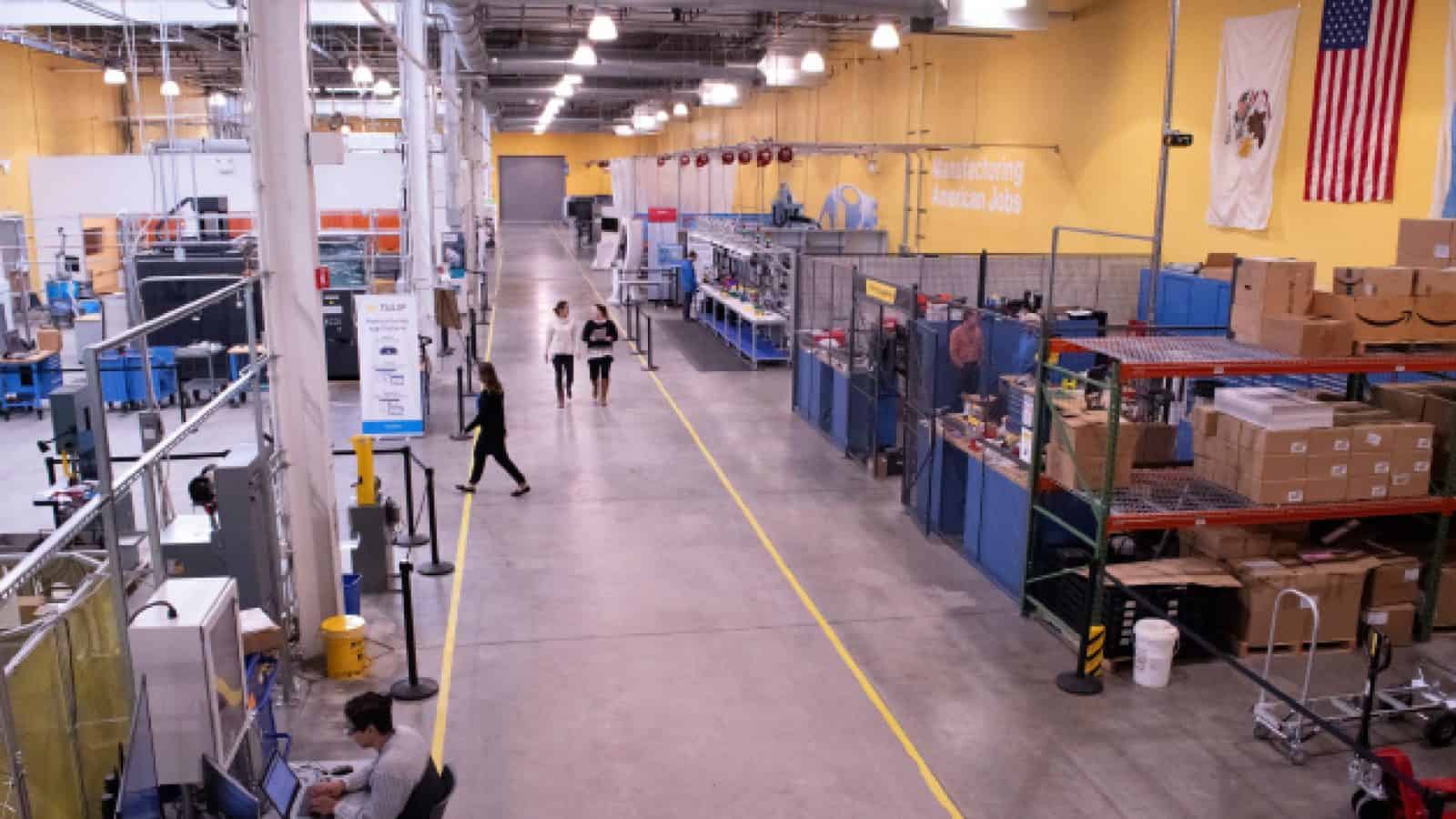Morgan Advanced Materials Case Study
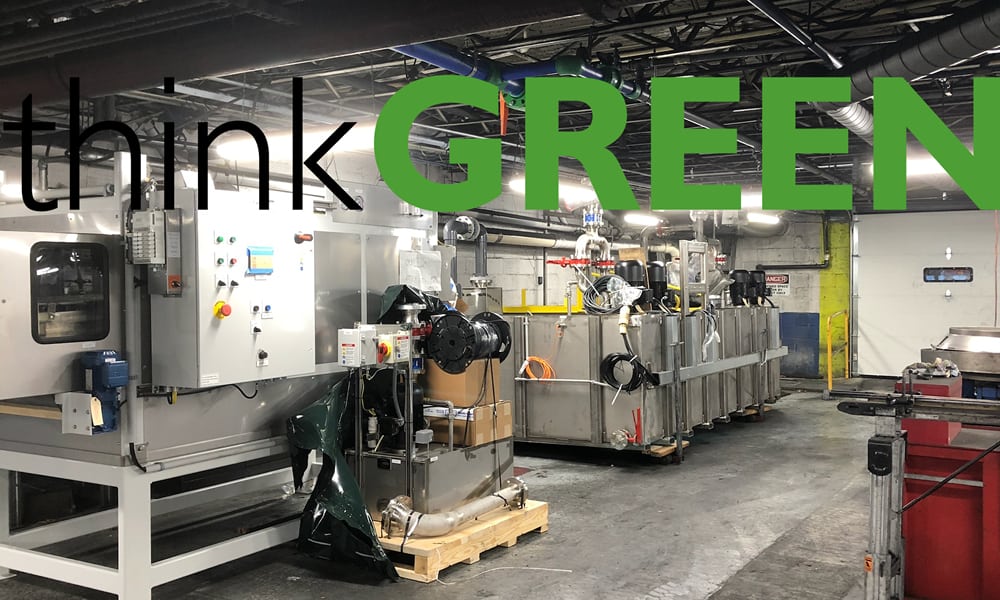
Morgan Advanced Materials’ thinkGREEN program helps identify and implement green technologies and processes and pursue continuous improvements.

For the past 10 years, Morgan Advanced Materials’ plant in St. Marys, Pa., has been developing and implementing projects designed to reduce the site’s energy intensity, water use, as well as landfill and hazardous waste disposal. This was to help Morgan Advanced Materials achieve one of its core corporate values: “to use advanced materials to make the world more sustainable, and to improve the quality of life” by minimizing the environmental impacts of its own manufacturing processes on resource consumption, air emissions, waste generation, and water discharge.
The results of these efforts at the St. Marys facility, and its sister sites worldwide, inspired the company to develop a new, global corporate thinkGREEN initiative. Launched in 2020, thinkGREEN sets 2030 corporate goals and 2050 aspirations based on a 2015 baseline, directing attention to identifying and implementing green technologies and processes, and pursuing continuous improvements corporate wide. It is patterned after Morgan’s established thinkSAFE initiative and accompanied by a substantial capital investment in enabling solutions.
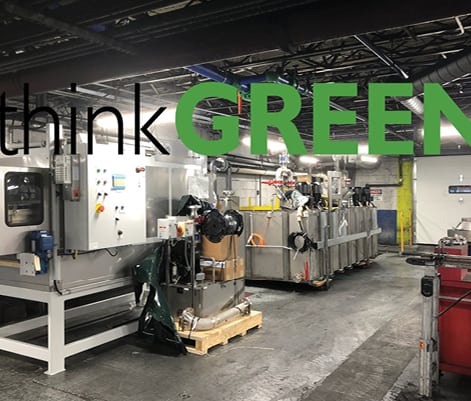
“Every improvement project has beneficial impacts, but three completed at St. Marys really hit it out of the park.”
— Carrie Lenze
The initiative is already bearing results for Morgan, which develops innovative materials such as thermal ceramics, molten metal crucibles, electrical carbon, seals and bearings, and technical ceramics. The St. Marys facility, which is part of the Seals & Bearing division, has reduced its hazardous waste, water usage, and landfill waste, became more energy sustainable — and improved safety and saved costs along the way. These impressive results earned Morgan the Manufacturing Leadership Council 2022 Award in the Sustainability and the Circular Economy category, which Mike Koscho, Morgan’s Global Director of Operations, calls “a great testament to the progress which we are making against our five environmental, social, and governance (ESG) improvement objectives and targets to improve our performance as a group.”
A Model Plant: St. Marys, Before and After
“Sustainability and environmental stewardship are integrated into Morgan’s daily operations. Every improvement project has beneficial impacts, but three completed at St. Marys really hit it out of the park,” says Carrie Lenze, North America Operations Director.
Hazardous waste: The St. Marys plant used to generate and ship about 60 drums of hazardous, flammable waste material annually, mainly due to its use of acetone in a cleaning station. It eliminated acetone from its waste stream by installing an on-site still in 2016 that cleans, distills, and returns the reclaimed acetone to the manufacturing process, leaving just the waste resins from the cleaned acetone to be discarded. This waste stream has been reduced to only four to six drums per year.
While the 2016 recycling and reuse of acetone on-site initially was deemed an environmental project to reduce Morgan’s hazardous waste exposure and prevent acetone from being trucked on highways, it also was a safety project due to acetone’s flammability. A small capital project to plumb the wash tanks together and install a manifold system and air diaphragm pumps made it completely hands-off from a material handling standpoint, eliminating the risk of spills, and avoiding the risk of injury. Ultimately, it is also a cost-saving project, having saved St. Marys about $35,000 in acetone costs in 2021 alone through recycling.
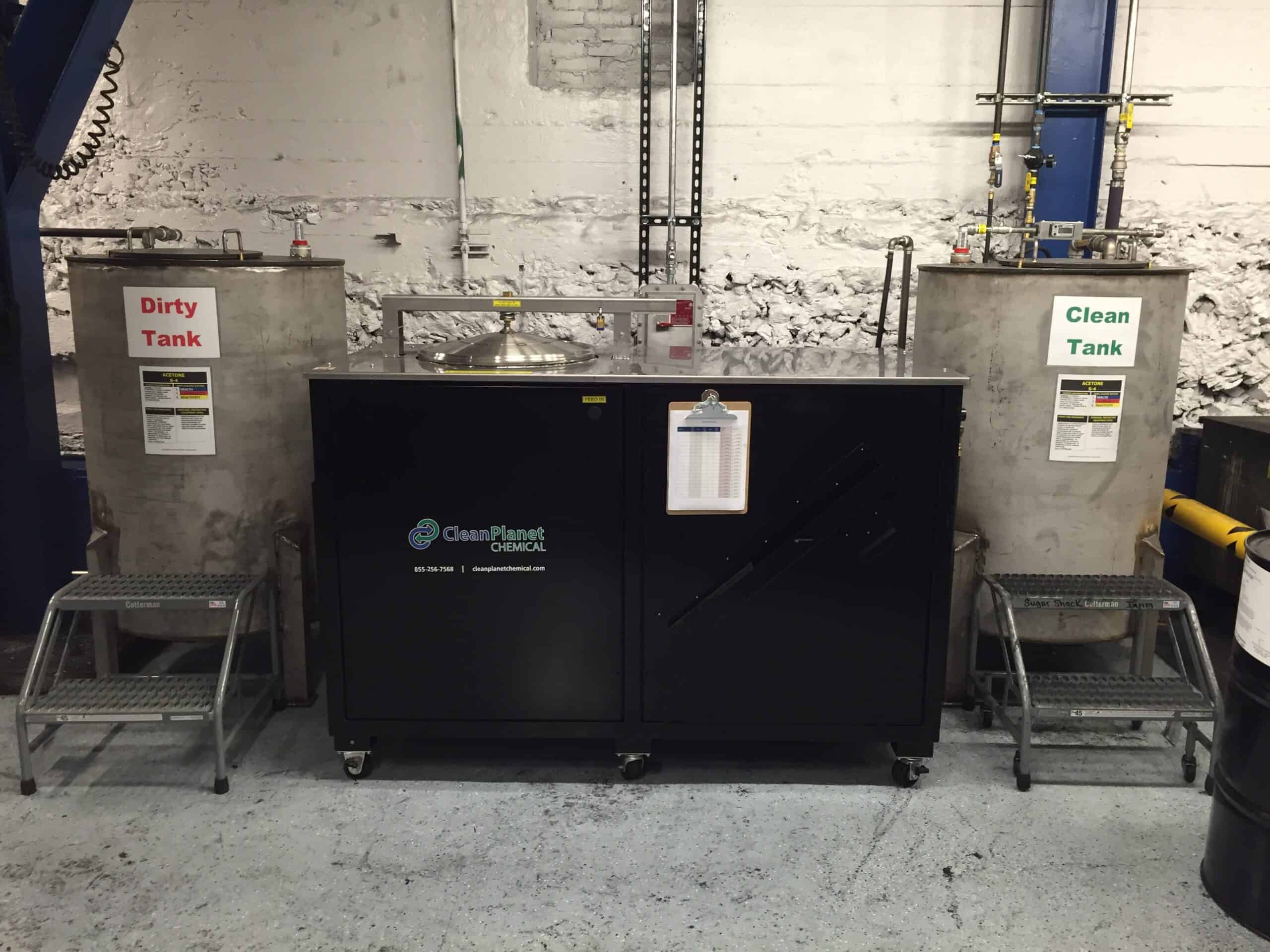
Water consumption: The plant has also dramatically reduced its consumption of city water, which initially was 24 million gallons per year — ranging from 35,000-40,000 gallons per day in the winter to more than 100,000 gallons per day in the heat of summer. Seasonally, water was as much as 25% of the plant’s utility costs, mainly because its old one-pass cooling water system had city water flowing into the building, through all the various equipment that needed cooling, and then back out to the creek. A 2017 cooling tower project allowed the plant to recycle the vast majority of the city water by implementing completely self-contained, treated, non-contact cooling water systems, rust inhibitors to protect the pipes, and biocides to prevent microbial growth in the water.
The 2017 cooling tower project was not initiated because the area is water stressed, but rather because St. Marys is a recreational area with very high-quality trout waters. This made the plant subject to discharge limits from the state’s Department of Environmental Protection. When temperature limitation changes meant the plant had to discharge water to the city sewer rather than returning it to the local water table, recycling it became the obvious solution. The $350,000 cooling tower project reduced the plant’s city water usage by almost 90%, from 24 million gallons to 2 to 2.5 million gallons per year.
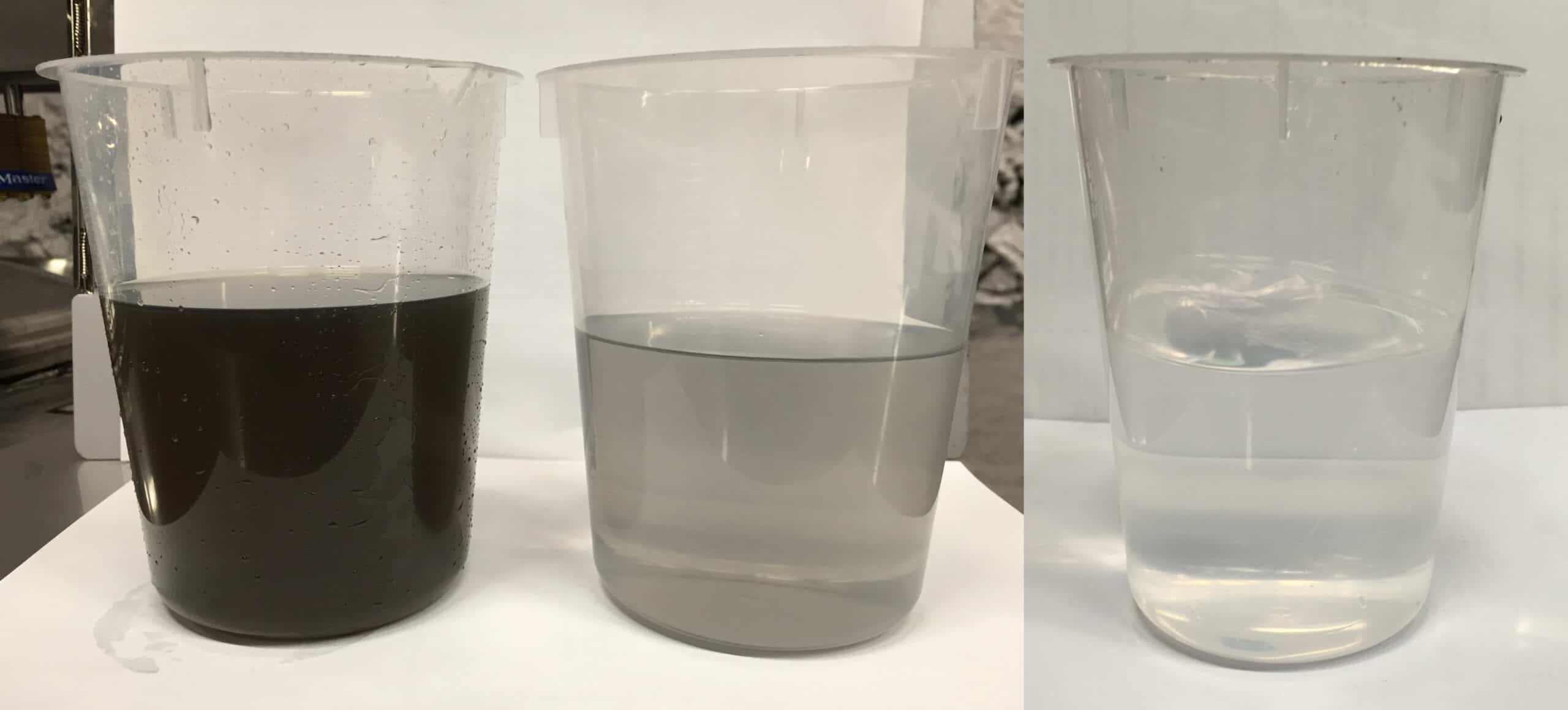
Landfill waste: Another challenge was the landfill waste associated with St. Marys contact cooling water used for wet grinding operations. The water is contaminated with the carbon grinding residue, and formerly the carbon swarf was removed using a settling tank and filter press arrangement, creating wet, heavy filter cake sludge that needed to be trucked to a landfill. With the new, more automatic inline filter system installed in 2020, the maintenance labor hours to operator the filter press were virtually eliminated. It is now as simple as changing the roll of filter paper and emptying the hopper. The new Oberlin filtration system has a belt of filter material with a self-contained pressurized cavity that is fed into a pressure chamber. When the filter cake builds up on the filter media in the pressure chamber, a blowdown process uses compressed air to clear the water contained in the filter cake, making it 50% dryer while leaving less weight in the hopper and recapturing water from the process.
The primary value with the new system is the maintenance savings which are estimated to be approximately $85,000 per year. Additional waste disposal cost savings from in avoiding wet filter cake sludge due to the improve blown down process on the new system is also significant. On a tonnage basis, sending dry carbon instead of wet carbon and eliminating water weight from the landfill load reduced the plant’s landfill bill by $5,000-6,000 per year. The 2020 project also is saving the plant about 100 gallons of water per day and the grinding water is a little cleaner. A true win, win, win.
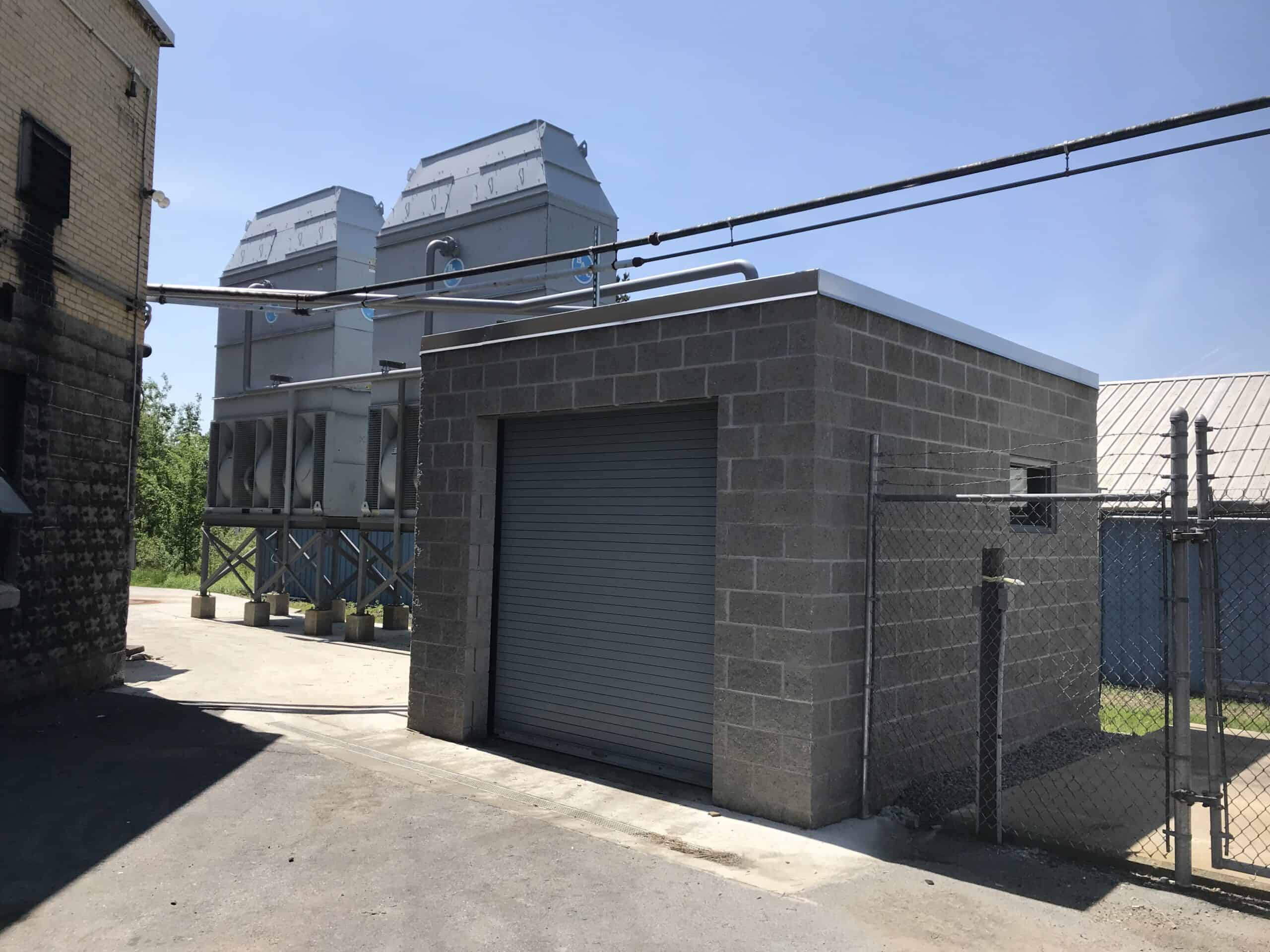
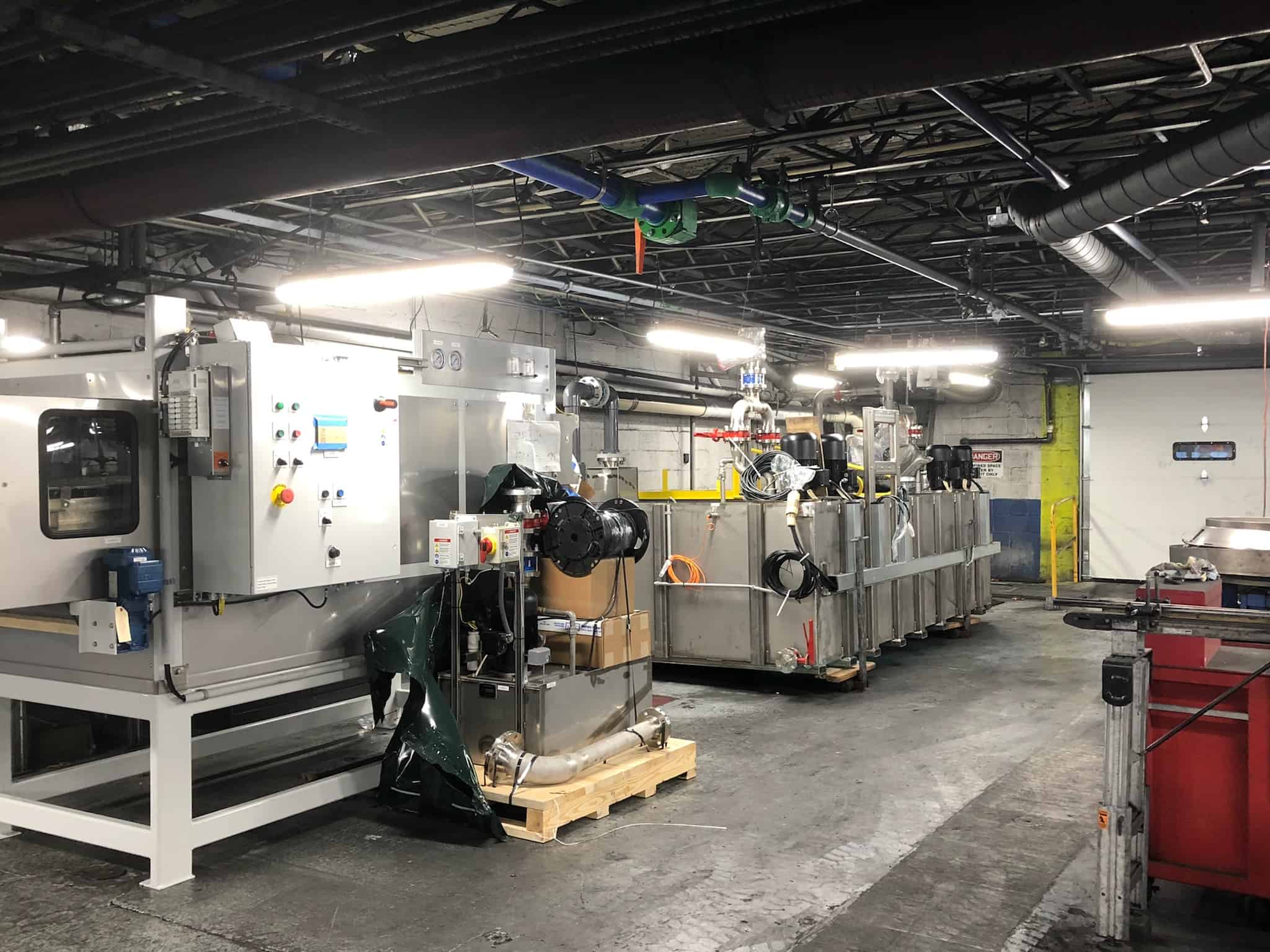
While these three projects are standouts, they are just the tip of the iceberg at the St. Marys plant. Among other consequential projects was a 2020 LED lighting upgrade of an older 2012 T8 to T12 conversion project that was completed when LED lights were cost prohibitive. The 2020 LED upgrade yielded, conservatively, around a million kilowatt-hours per year of savings. The 2013 replacement of a dozen dust collector rotary air locks that ran 24/7 with a new, Vac-U-Valve assembly, a completely mechanical, passive system, reduced electricity usage and saved the company $5,000-6,000 per year. The planned 2022 locker room shower upgrade is largely intended to modernize a long- standing eyesore and improve morale, though it is also expected to save St. Marys about 400,000-500,000 gallons of water a year with more water-efficient fixtures. It is also a multiple energy improvement project focused on modernization of HVAC, windows and doors, plant mechanical systems, industrial ovens, and process equipment. For instance, the upgrade of multiple small batch curing ovens has yielded a 50% reduction in electrical energy consumption due to improved insulation packages and controls.
In addition to the specific energy intensity reduction project undertaken by the St. Marys facility, it is also worth mentioning that both the Morgan Seals & Bearing St. Marys and Coudersport sites participate in the Emission Free Energy Certificate program. In this program, Morgan pays a little more for their electricity to ensure it is sourced solely from CO2-emissions-free sources. The upcharge is then invested to the strengthen the grid with additional green energy sources for the future. This is our way of not only expressing what is important to Morgan but also paying it forward at the same time.

Director NA Operations Carrie Lenze emphasizes that sustainability and environmental stewardship are integrated into Morgan’s daily operations. “Our St. Marys team is proud to make a big positive difference for our employees, our communities and our planet.”
Partnering for a Sustainable Future
Morgan’s partner for outsourced industrial maintenance, Advanced Technology Services (ATS), has supported the St. Marys plant throughout many of its environmental impact reduction efforts. For instance, ATS helped with commissioning some of the site’s new, efficient technologies, such as the Oberlin inline filter system, new compressed air dyer, and is responsible for keeping the equipment up and running at an optimal level.
ATS also handles routine tasks such as filter changes and performing preventive and predictive maintenance on the plant’s old and new equipment, such as using thermographic imaging to look for hot spots and predict failure conditions in time to make corrections before failure occurs.
Recently, ATS technicians initiated and completed air leak inspections, which led to a discussion with St. Marys about how even small, unintentional air leaks can lead to large costs over time, and how air nozzles used purposely in larger volumes might blow all the time when the air is only needed maybe 15% of the time. As a result, in support of Morgan’s cost savings initiatives for 2022, ATS and St. Marys are working together to implement continuous improvement activity in the plant’s air management, such as adding a solenoid valve to only blow air inside a CNC machine during cutting operations, to dust off a part or clear a drill bit or cutting tool.
“Together, the thinkGREEN initiative, modern technologies and tools, and ATS services are helping to make Morgan’s vision a reality,” says Lenze.
Extending Sustainability Company-wide
“Raising awareness of Morgan’s sustainability priorities across all its global sites is key to expanding thinkGREEN’s scale across the operational footprint and advancing the company’s long-term business goals,” says Lenze. “St. Marys has a long history of sharing information about its successes with its fellow North American sites in Coudersport, Pa., and Dunn, N.C., and those sites have been implementing similar environmental initiatives. Now, with thinkGREEN, knowledge sharing is global.”
thinkGREEN was born out of Morgan’s long-standing commitment to helping its customers, especially those operating energy-intensive processes, to reduce energy consumption, emissions, and operating costs. However, with thinkGREEN, these objectives are extended to the company’s own environmental impact corporate-wide. Specifically, in defining its Environmental, Social, and Governance (ESG) commitments to Protect the Environment, Morgan established long-term aspirations and 2030 goals to improve the group’s performance.

“Together, the thinkGREEN initiative, modern technologies and tools, and ATS services are helping to make Morgan’s vision a reality.”
— Carrie Lenze
Among the company’s aspirations are to be a CO2 net-zero business by 2050 (in line with the Paris Climate Agreement); using water sustainably across the business; and improving the efficiency of processes at all manufacturing sites to reduce waste. In addition, it aims to move from its 2015 baseline to achieving, by 2030, a 50% reduction in Scope 1 and Scope 2 CO2 emissions; a 30% reduction in water use in high and extreme stress areas; and a 30% reduction in total water usage.
Morgan is already making quantifiable progress toward these goals far beyond its work at the St. Marys plant. For example, Morgan’s absolute greenhouse gas (GHG) emissions (~Scopes 1 and 2) are down by 22% compared to 2018 levels and 15% compared to 2019 levels.
Morgan’s broad-based improvement program covers energy procurement, process improvements, and behavioral changes in its plants. Additionally, the company is focused on the circular economy to enable a healthier balance between the environment, economy, and society. This includes initiatives that increase resource efficiency, prolong the useful life of materials, design out waste, and minimize the consumption of finite resources.
It also recognizes an opportunity to move into the hydrogen economy, such as transitioning from using natural gas to clean, hydrogen-fueled sources to heat some of Morgan’s baking and sintering operations, which will reduce the carbon elements of burning natural gas. Phasing out fossil fuels and replacing them with hydrogen sources will also help mitigate climate change because the combustion of hydrogen releases water vapor, not carbon, into the atmosphere. In the first half of 2021, the company transitioned to carbon-neutral energy in a number of its sites.
Reaping the Returns on Sustainability Investments
“thinkGREEN’s 2030 goals are a journey of environmental improvement projects across the enterprise, much like those completed and continually being improved at St. Marys,” says Lenze. Morgan has committed to investing about $12.5 million annually, globally, toward the improvement innovations and is now tracking and quantifying projects, developing new projects, and freely sharing best practices at a corporate level.
Morgan is already seeing returns on this corporate-wide investment with significant reductions in energy costs along with reducing the company’s carbon footprint. In 2011, Morgan had $27.1 million in sales and $1.27 million in utility costs, which was 4.68% of sales. In 2019, the company had $26.9 million in sales and $831,000 in utility costs, or just 3.10% of sales. Had the utility costs continued to be 4.68% of sales from 2011 to 2019, the total costs would have been $1.6 million higher than the actual totals over the eight-year time span.

“Morgan is already seeing returns on its corporate-wide investment with significant reductions in energy costs along with reducing the company’s carbon footprint.”
Despite the pandemic and ensuing economic changes, Morgan controlled its utility costs. Though sales declined from $27.1 million in 2019 to just over $21 million in 2020, a 20% loss, its utility costs stayed down at about $720,000. Moreover, its energy intensity actually dropped on the electrical side during this period, down from just over 1,000 kW per $1,000 of sales to about 936 kW per $1,000 of sales.
Additionally, the company has more than offset price inflation, including some very significant increases in its water rates, by reducing resource consumption and by the purchasing team’s ability to keep the electricity and natural gas rates fairly steady.
“The significant successes at St. Marys in areas such as conserving energy and natural resources, reducing pollution and hazardous waste, reclaiming materials, and establishing an environmentally safe workplace and community, provide insights into future potential corporate achievements,” says Lenze. “Already, the initiative is accelerating environmental improvements across the enterprise, driving significant cost savings, and increasing Morgan’s profitability and competitiveness, while also advancing its stature as a good corporate citizen.” M

Company Fact File
Name: Morgan Advanced Materials
Sector: Chemicals & Related Products
HQ location: Windsor, U.K.
Revenues: $1.1 billion (2021)
Employees: 7,800 Employees
Web url: www.morganadvancedmaterials.com
About the author:

Sue Pelletier, a contributing editor with the Manufacturing Leadership Journal, is a seasoned writer/editor with experience in online, social media, e-newsletter, tablet app, book and e-book, and print publications.
